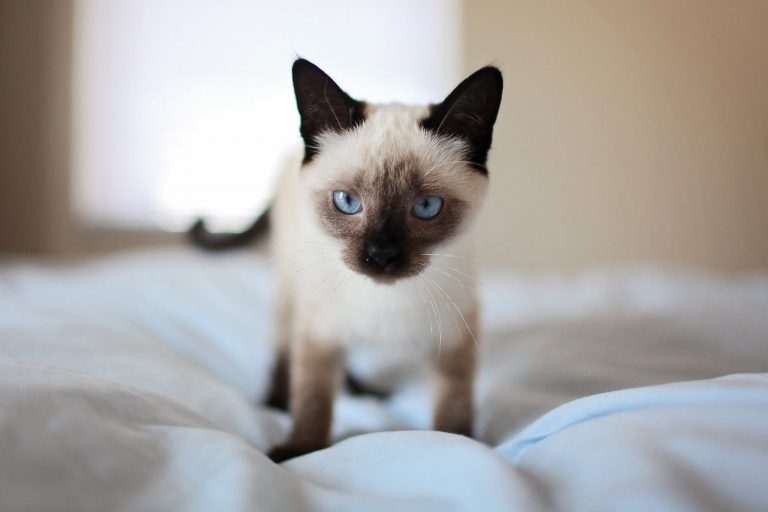

You have heard of the saying, “eating for 2,” when referring to a pregnant human, no doubt. Pregnant cats will be much hungrier than usual. A lack of iron is most concerning as this can lead to anemia. If your cat only eats kibble, consider introducing supplements into its diet. Wet food is also preferred for resolving food-related issues. Check that your cat’s preferred meals are age-appropriate. Once a cat reaches 10 years of age, its nutritional requirements change. If so, ensure that your cat is fed a high-quality, age-appropriate diet. Your cat eats non-food items in an attempt at balancing the vitamins and minerals in its body. Shortages of iron, zinc, and calcium are most commonly linked to pica. When adopting a kitten, ensure that it has spent sufficient time with its mother and littermates. Scientific Reports link early weaning to aggression later in life. The habit may start with sucking on wool or fabric but will soon graduate to swallowing. The cat is attempting to replicate the experience of suckling and getting nourishment from a teat. Kittens separated too soon, or rejected by their mother, often develop pica. By the time that they reach this age, the cat will have been taught to eat solids. Kittens should not leave their mothers until they are at least 8 weeks old. Pica has been linked to cats being weaned too soon. If an older adult cat is showing signs of pica, there will usually be a reason: Early Weaning As explained by Applied Animal Behavior Science, pica is common in kittens and young cats. If your cat is very young, the cat is likely to outgrow the behavior. Feline pica syndrome is most common in these breeds: Some cats are genetically predisposed to pica. What Causes Pica in Cats?Ĭauses vary from physical ailments to phycological distress. Any non-digestible item must be removed from a cat’s stomach. X-rays may be required to determine what is causing the problem. If you notice these symptoms in a cat with pica, seek immediate advice from a vet. Fever or low body temperature (anything above or below 100 degrees Fahrenheit).Pain in the belly (verbalizations, refusal to be touched).Also, check for warning signs of digestive difficulties. If you know that your cat has pica, restrict access to anything the cat may eat and keep it indoors. Worse still, your cat may eat something that causes a digestive blockage, such as a plastic carrier bag. For example, your cat may eat dirt or soil that contains dangerous bacteria. If your cat is eating strange or unusual household objects, though, this is more of an issue.Įating items that aren’t food can be fatal. Cats can be fed dog food in an emergency. Equally, a cat eating human food or dog food is likely born out of curiosity.Īs long as the food is not damaging to the cat, it is not a concern. This is an extension of the feline hunting instinct. Wool and fabric (blankets, carpet, and clothes)Įating insects or food intended for other animals are not symptoms of pica.Common non-food items that cats eat include: Instead, the item will be ground along the back teeth before being swallowed, creating a sense of reward in the cat’s brain.

The cat will not tear something apart or swallow it straight down. You can tell if a cat has pica by how it interacts with things that aren’t food. To do so, you must also find out the underlying cause. You must prevent your cat from eating something unsafe. Your cat may be hungry, curious, or disoriented, but the result will remain the same. Younger cats are most likely to have the condition due to being weaned too early, but senior cats can also develop pica later in life due to medical conditions, such as cognitive dysfunction syndrome. It is a behavior that usually has another underlying cause. Pica is a compulsion to eat non-food items. Consequently, the cat is more likely to have pica. It is rare for a well-loved domesticated cat to feel so insecure about whether it’ll get fed. If a cat is worried about getting enough food, it will seek a way to sustain itself. Cats can be fussy about food, but they are also born survivors. However, cats can be found devouring things that have no place in their diet.Īside from curiosity, your cat may just be hungry. Adult cats should certainly understand what is safe to eat and what should be avoided. Most cats outgrow this behavior by the time they reach adolescence. A cat will often decide whether to put something in its mouth based on its scent. You’ll find this most often occurs with items that smell unique and interesting. 3.12 Feline Immunodeficiency Virus (FIV) or Feline Leukemia Virus (FeLV) Why Is Cat Eating Non-Food Items?Ĭats explore the world with their mouths, which can sometimes result in cats eating things that aren’t food.


 0 kommentar(er)
0 kommentar(er)
